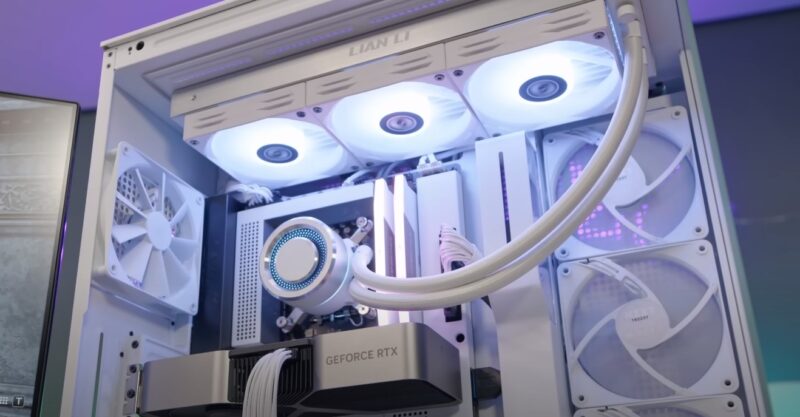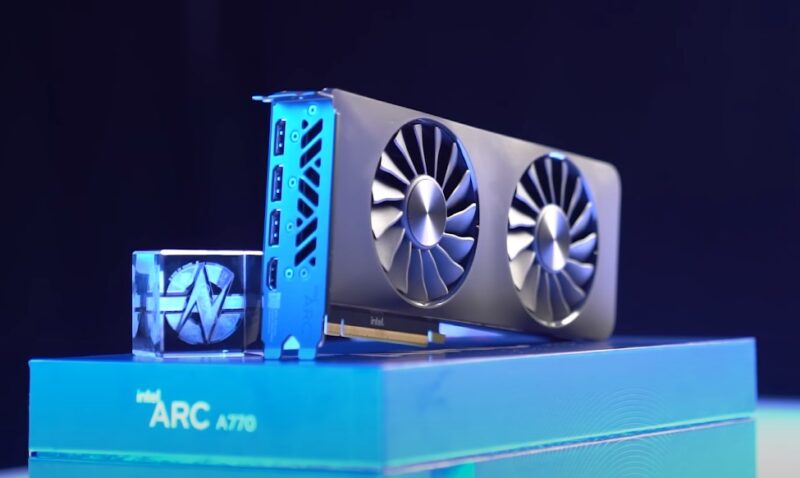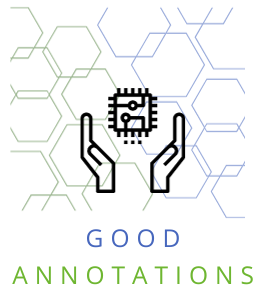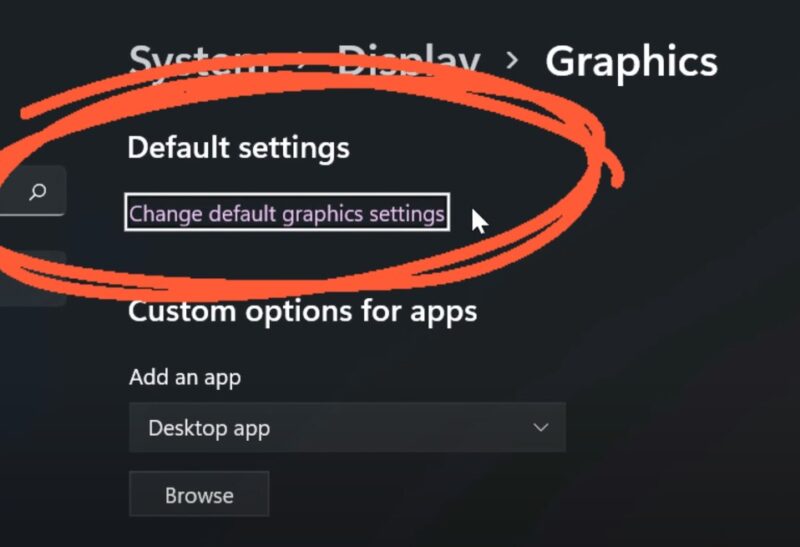Hardware Accelerated GPU Scheduling is a feature introduced in Windows 10 and further refined in Windows 11. Its primary function is to enhance the way your system’s GPU handles graphical tasks.
The main feature is its ability to allow your GPU to manage its own memory (VRAM) more efficiently. Traditionally, the CPU played a significant role in this process, which could lead to bottlenecks, especially in systems with a powerful GPU but a weaker CPU.
With HAGS enabled, the GPU takes over more of the memory management tasks that were previously handled by the CPU. This change aims to reduce latency and improve performance, especially in graphics-intensive applications and games.
On vs Off – Impact and Comparison
When it comes to Hardware Accelerated GPU Scheduling, whether to keep it on or off depends largely on your system configuration and usage needs. Understanding the difference between having HAGS on or off is crucial for making an informed decision.
HAGS On: Advantages and Main Features
When HAGS is enabled, the GPU takes on more responsibility for managing its video memory. This can lead to several benefits, particularly in systems where the GPU is more powerful than the CPU.
- Reduced Latency: One of the primary advantages of turning HAGS on is the potential reduction in latency. By offloading some of the scheduling tasks from the CPU to the GPU, there can be a decrease in the time it takes for frames to be processed and displayed. This is especially noticeable in high-end gaming or graphic-intensive applications.
- Enhanced Performance in Certain Scenarios: For systems with a high-end GPU and a less powerful CPU, HAGS can help alleviate CPU bottlenecks. This can result in smoother gameplay, with fewer frame drops and a potentially higher frame rate in some games. You can combine it with scaling for even better results.
- Future Compatibility: As software and game developers continue to optimize their products for modern hardware, the benefits of HAGS are likely to become more pronounced. This makes it a forward-looking feature, especially for those who regularly update their games or software.
When to Keep HAGS Off?

While HAGS can be beneficial in some scenarios, there are situations where it’s better to keep it turned off.
- Balanced or CPU-Heavy Systems In systems where the CPU is on par with or more powerful than the GPU, HAGS might not offer significant benefits and could even lead to instability in some cases.
- Older Games and Applications Older software that hasn’t been optimized for modern GPU architectures may not benefit from HAGS and could experience issues if it is enabled.
- Stability Concerns As with any new technology, there can be stability concerns. If you experience crashes or other issues with HAGS enabled, it’s advisable to turn it off.
| Feature | HAGS On | HAGS Off |
|---|---|---|
| Latency | Potentially reduced | Standard latency |
| Performance Impact | Can improve in GPU-heavy systems | No change or stable in balanced systems |
| Best Use Case | High-end GPUs with weaker CPUs | Systems with balanced or strong CPUs |
| Software Compatibility | Better for modern applications | More stable for older software |
| Future Outlook | Increasing benefits with updates | Stable and reliable performance |
Can It Really Improve the GPU Performance?

Hardware Accelerated GPU Scheduling (HAGS) has the potential to improve GPU performance, but the extent of this improvement can vary significantly based on several factors.
Main Reasons to Keep it On
- Reduced CPU Bottlenecking: HAGS allows the GPU to manage its own memory (VRAM) more directly, reducing reliance on the CPU for these tasks. This can be particularly beneficial in systems where the CPU is a performance bottleneck. By alleviating some of the load from the CPU, HAGS can lead to smoother frame delivery in games and better performance in graphics-intensive applications.
- Varied Performance Gains: The actual performance gains from HAGS are not uniform across all systems. Users with high-end GPUs paired with less powerful CPUs are more likely to notice improvements. On the other hand, systems with a strong CPU may see little to no performance change with HAGS enabled.
- Dependence on Software Optimization: The effectiveness of HAGS also depends on how well applications and games are optimized to take advantage of this feature. Modern games and applications designed with the latest GPU architectures in mind are more likely to benefit from HAGS.
Benefits for Gaming
Gamers are particularly interested in any feature that can squeeze extra frames per second (FPS) out of their systems, and HAGS is no exception.
- Gaming Performance The impact of HAGS on gaming can range from negligible to noticeable. In some cases, enabling HAGS can lead to a smoother gaming experience, with fewer frame rate drops and lower latency.
- Game Compatibility Not all games benefit equally from HAGS. The improvements are more likely to be observed in newer games designed with modern GPU architectures in mind.
Alternatives to Improve GPU Performance
While HAGS is a notable feature, it’s not the only way to enhance GPU performance. Here are some alternatives:
- Updating Drivers: Regularly updating GPU drivers can significantly improve performance. GPU manufacturers frequently release updates that enhance compatibility, fix bugs, and sometimes increase performance in games and applications.
- Overclocking the GPU: Overclocking involves pushing the GPU to run at higher speeds than its default setting. This can lead to noticeable performance gains but should be done cautiously, as it can increase the risk of overheating and potentially shorten the GPU’s lifespan.
- Optimizing In-Game Settings: Adjusting the graphics settings in games can lead to a better balance between visual quality and performance. Lowering settings such as shadows, textures, and anti-aliasing can significantly increase frame rates.
- Upgrading Hardware: If the GPU is outdated or not powerful enough for your needs, upgrading to a more powerful GPU is a straightforward way to improve performance.
- Improving Cooling: Efficient cooling can enhance GPU performance. Overheating can lead to thermal throttling, where the GPU slows down to reduce temperature. Better cooling, either through improved case airflow or aftermarket coolers, can help maintain optimal performance.
- Tweaking Power Settings: Adjusting the power management settings for the GPU can also impact performance. Setting the power mode to ‘High performance’ in your system’s power options can provide a boost, especially in laptops.
FAQs
Does Hardware Accelerated GPU Scheduling affect video editing or rendering tasks?
HAGS primarily impacts real-time graphics tasks, such as gaming or 3D rendering in real-time applications. For video editing and non-real-time rendering tasks, the impact is usually minimal. These tasks rely more on raw GPU and CPU power, as well as software optimization, rather than how the GPU schedules frame rendering.
Can enabling HAGS cause compatibility issues with older graphics cards?
HAGS is designed to work with modern GPU architectures, and its compatibility with older graphics cards can vary. In some cases, enabling HAGS on an older GPU might not lead to performance improvements and could potentially cause stability issues or compatibility problems with certain applications.
Is Hardware Accelerated GPU Scheduling beneficial for integrated graphics, like Intel’s Iris Xe or AMD’s Vega graphics?
The benefits of HAGS on integrated graphics are typically less pronounced than on dedicated GPUs. Integrated graphics usually have lower performance ceilings and share memory with the CPU, making the impact of HAGS less significant. However, slight improvements might be noticeable in certain scenarios.
How does Hardware Accelerated GPU Scheduling interact with VRAM size? Does having more VRAM make HAGS more effective?
HAGS optimizes how the GPU manages its VRAM, but the amount of VRAM doesn’t directly influence its effectiveness. While having more VRAM is generally beneficial for graphics tasks, HAGS can optimize VRAM usage regardless of the VRAM size, focusing more on efficiency rather than capacity.
Are there any specific types of games or applications where HAGS is known to be particularly effective?
HAGS tends to be more effective in modern, graphics-intensive games and applications that rely heavily on the GPU for rendering complex scenes in real-time. Games with advanced graphics technologies like ray tracing may see more benefits, as these are more demanding on GPU resources.
Does Hardware Accelerated GPU Scheduling have any impact on power consumption or battery life in laptops?
The impact of HAGS on power consumption and battery life is generally minimal. Since it optimizes GPU scheduling, the changes in power usage are not significant enough to have a notable effect on overall battery life in laptops.
Last Words
While Hardware Accelerated GPU Scheduling can improve GPU performance in certain scenarios, its effectiveness varies. For those who don’t see significant gains from HAGS or are looking for additional ways to boost GPU efficiency, the alternatives mentioned above can be valuable strategies.
Regular driver updates, overclocking, game settings optimization, hardware upgrades, better cooling, and power setting adjustments are all viable methods to enhance your GPU’s performance.

